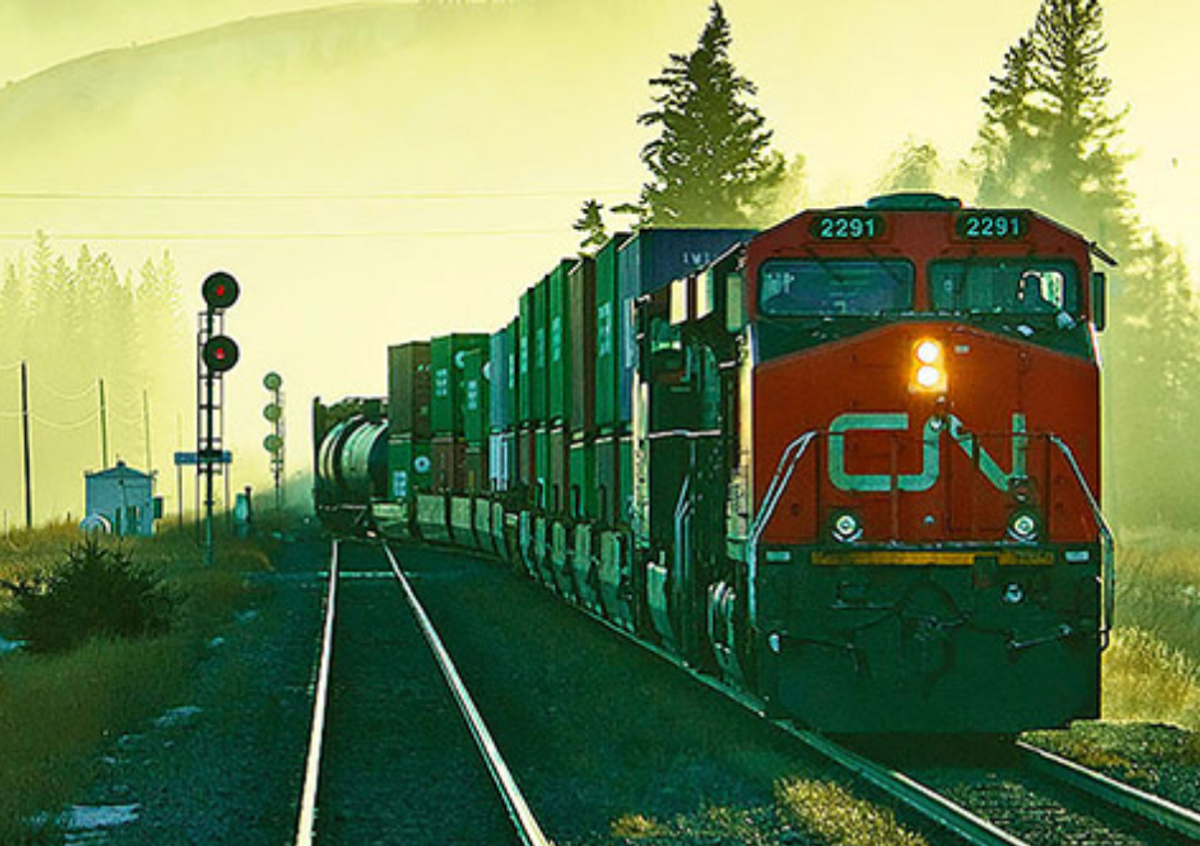Freight trains have stopped rolling in Canada today after negotiators failed to agree on the terms of a new contract for union workers at Canadian National (CN) and Canadian Pacific Kansas City (CPKC) railroads, bringing supply chains to a screeching halt at a critical time for both back-to-school sales and the start of the winter holiday inventory rush.
The stoppage began one minute past midnight on Thursday morning, when CN and CPKC locked out employees represented by the Teamsters Canada Rail Conference (TCRC). Until the railways and the TCRC come to an agreement, or binding arbitration is imposed, all train movements within Canada and between Canada and the United States have ceased, according to maritime carrier Hapag-Lloyd.
Both railways blamed workers for the stoppage, with CN saying “the union did not respond to another offer by CN in a final attempt to avoid a labour disruption.” And CPKC issued a similar statement, stating that “CPKC has bargained in good faith, but despite our best efforts, it is clear that a negotiated outcome with the TCRC is not within reach.”
However, union leaders insisted they had also been performing good faith negotiations. “Over the past several days, the Teamsters have put forward multiple offers, none of which were seriously considered by either company. The main obstacles to reaching an agreement remain the companies’ demands, not union proposals,” Paul Boucher, President, Teamsters Canada Rail Conference, said in a release.
Whoever is at fault, the timing hits global supply chains at a time when many links were already strained from additional disruptions, such as maritime freight carriers steering away from violence in the Red Sea, prompting them to sail longer routes and divert cargo to more distant ports. In that context, the rail stoppage will affect vast swaths of goods, such as the 30% of all clothes, shoes, and accessories that move by rail, including children’s apparel, backpacks, winter coats and boots, work shoes, and uniforms, according to the American Apparel & Footwear Association (AAFA).
So the trade group, which represents some 1,000 global apparel, footwear, travel goods, and accessories brands, is calling for an urgent stop to the strike and lockout that have stopped rail operations. “We need representatives of the unions and management to return and stay at the negotiating table to end this lockout and strike and ensure that a fair, sustainable, and long-term deal is reached. Keeping goods moving supports not only the rail jobs at issue, but also the jobs of millions of other workers up and down our supply chains," AAFA President and CEO Steve Lamar said in a release.
Likewise, the Consumer Brands Association said the stoppage will hit the consumer packaged goods (CPG) industry, America’s largest domestic manufacturing sector. And that situation could soon grow worse, the group warned. “Disruptions across one transportation mode, no matter how pronounced, quickly lead to compounding disruptions that can contribute to higher prices, supply scarcity, and wasted agricultural product,” Tom Madrecki, CBA’s Vice President of Campaigns and Special Projects, said in a statement. “It is imperative that both the Canadian and U.S. government take immediate action and help both parties come to an agreement in order to prevent these impactful consequences for North America's supply chain."
Impacts of the stoppage will also expand to truckload and ocean markets, triggering widespread impacts across North American industries, said the supply chain visibility platform provider Project44. While no sector is immune, the industries anticipated to be most impacted include crude oil and petroleum, minerals and metals, lumber and forestry products, and automobile parts, Project44 said.
Indeed, the supply chain risk analysis firm Everstream Analytics said that carriers had already started to divert cargo from Canada’s West Coast ports before the strike began today. For example, the number of vessel arrivals at container terminals in the Port of Vancouver dropped from 73 to 61 for the second week of August, the second lowest number of arrivals throughout 2024. And the port reported a 22% reduction in the number of vessel arrivals in Vancouver since the middle of July.
In response to the rail stoppage, Everstream Analytics forecasted that more container ships will start to divert to alternative ports in the U.S., including Los Angeles-Long Beach, Oakland, and Seattle in the coming days, as yard congestion at Canadian ports and, subsequently, rail dwell times increase significantly. Following that trend, the most impacted goods shipped via rail would be fertilizer, iron ore, grain, cement, salt, potash, coal, cars, and wood/timber, as well as containers loaded with consumer goods or intermediate parts, the firm said.
















